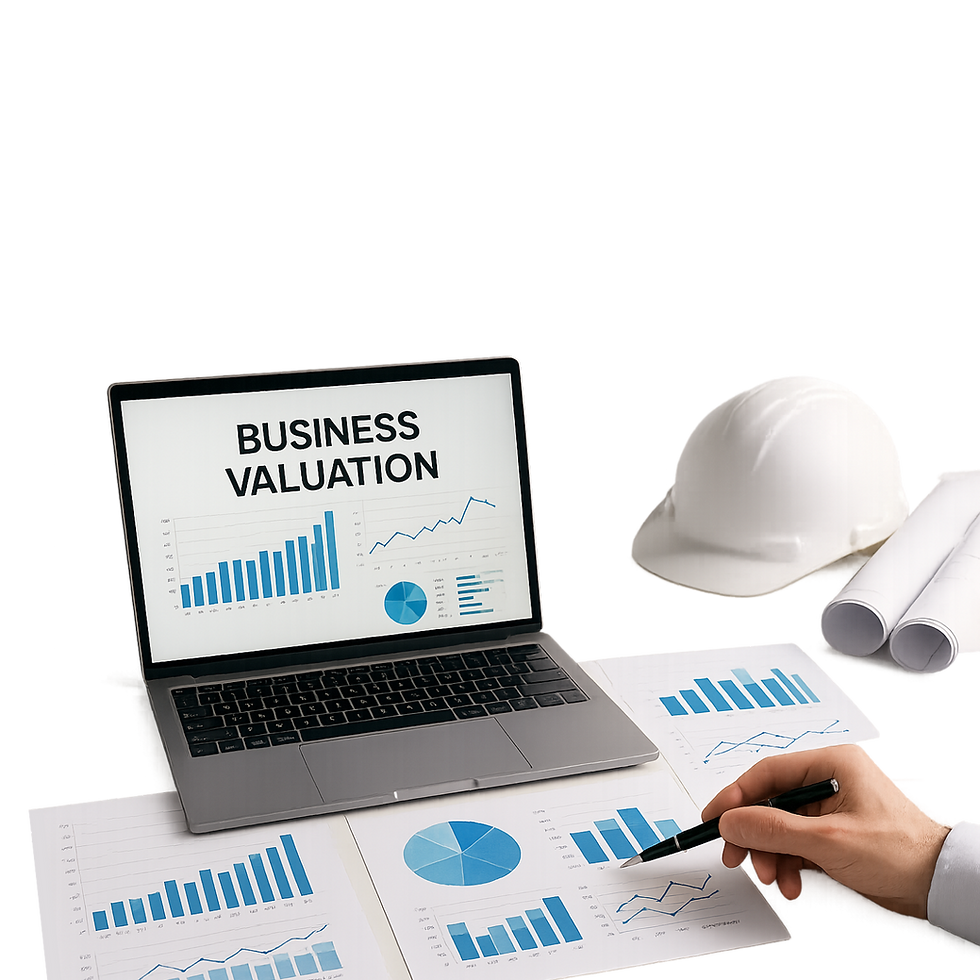The Valuation Gap: Why Owners’ Expectations Rarely Match Market Reality
- Paul Williams
- Aug 8
- 2 min read
Updated: Aug 25

Ask ten restoration owners what their business is worth, and most will give you a number higher than what the market would actually pay. It’s not because they’re unrealistic, it’s because valuation looks very different depending on whether you’re the one running the business or the one writing the check.
At Restoration Business Advisors, we call this the valuation gap: the difference between what owners believe their company is worth and what buyers are willing to pay in the market.
Why Owners Overestimate Value
Most owners spend years building their company, so it’s natural to place a premium on the sweat equity, sacrifices, and risks taken along the way. Unfortunately, that value doesn't always show up in purchase price or on the balance sheet.
Some of the most common reasons owners overestimate their valuation include:
Rule of thumb multiples - hearing that “restoration businesses sell for 6x” and assuming it applies universally.
Revenue bias - focusing on topline sales without accounting for margins and profitability.
Ignoring risk factors - not factoring in customer concentration, CAT dependency, or lack of management depth.
Personal attachment - owners naturally value the business higher because it represents their life’s work.
How Buyers Really Look at Value
Buyers take a far more clinical approach. They look at:
Defensible EBITDA - the true, adjusted earnings after legitimate add-backs.
Quality of revenue - recurring vs. storm-driven, mitigation vs. reconstruction, insurance vs. commercial.
Team and systems - whether the business can run without the owner.
Financial discipline - reliable reporting, clean accounting policies, and visibility into cash flow.
Cash flow strength - not just profitability on paper, but whether cash consistently turns over and supports growth.
State of equipment and vehicles - have you reinvested to keep assets productive, or are you running them to the bone? Buyers notice.
Risk profile - how diversified the revenue is and how stable margins are.
And the list goes on. To a buyer, these are the foundational drivers of the multiple they’re willing to pay.
Closing the Gap
The good news? The valuation gap isn’t permanent. Once you understand how buyers think, you can align your business with the drivers they reward. That might mean improving job costing, diversifying revenue, building management depth, or tightening financial reporting.
By addressing these factors in advance, owners can turn “discounts” into premiums and close the gap between expectations and reality.
Why Market-Based Valuation Matters
A market-driven valuation (one grounded in real transaction data, industry experience, and buyer behavior) is the only way to truly understand what your restoration business is worth today. We provide you with more than just a number, we give you a roadmap: what’s working, what’s hurting value, and what to fix if you want to maximize your exit.
At Restoration Business Advisors, we deliver valuations that are realistic, credible, and actionable. They bridge the gap between what you hope your business is worth and what the market will actually pay, giving you clarity and confidence to make the right strategic moves.



Comments